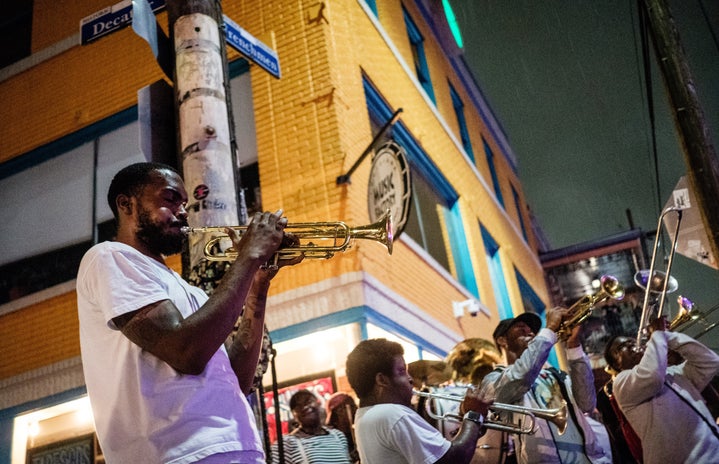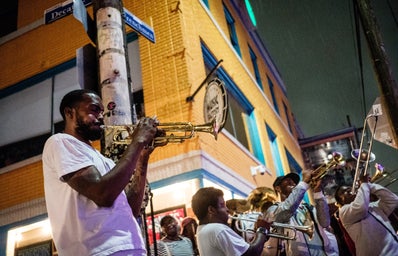Anyone who has visited St. Louis in February can tell you about the wonders of the city’s Mardi Gras celebrations. The streets of Soulard fill to the brim for the annual parade—college kids and young adults cramming together to collect beads tossed from parade floats.
But anyone who hasn’t seen such festivities may wonder how the French holiday even made its way to St. Louis.
A city settled firmly in the Midwest, St. Louis does not have a large French-speaking population. It sits 600 miles away from New Orleans, the Mardi Gras capital of the nation. The so-called “Gateway to the West” is most well-known for its rich history of baseball, blues music and thin-crust pizza. So how did it come to have the country’s second-largest Mardi Pardi?
Mardi Gras originated as a Christian feast to commemorate the final day before the season of Lent; it was a time to indulge and gather with friends before 40 days of fasting. The name “Mardi Gras” is French for “Fat Tuesday,” which English speakers often use when referring to the day. Today, the holiday has lost much of its religious connotation but is still widely celebrated.
The first large-scale American Mardi Gras was held in New Orleans, Louisiana, on February 27, 1827, according to National Geographic. It began with just a small group of students. Over the past two centuries, the festivities have only grown. Once a single-day event, many people now stretch Mardi Gras out to a whole week. Gold, purple and green beads pile up around attendees’ necks, and there is no shortage of beignets and jambalaya. While the name may be French, Mardi Gras in New Orleans has come to be a melting pot of the city’s Cajun, African American, and Caribbean cultures.
According to the St. Louis Press-Union, the first local celebration was held by five friends in December 1979. The group just wanted to throw a party, and one friend owned a house in Soulard where it could be hosted. Since Fat Tuesday was around the corner, someone suggested Mardi Gras as the theme. Many participants thought the idea was strange at first, but the party was a hit. Now, more than 40 years later, the celebration is still thriving.
But how has Mardi Gras flourished in Soulard specifically? Besides the fact that the neighborhood’s name means “drunkard” in French, it has many characteristics that make it the ideal host. The area was originally settled by a Frenchman named Antoine Soulard, and French architectural influence is seen in the neighborhood’s farmers market and oldest homes. Soulard is also home to dozens of bars, the Anheuser-Busch Brewery and countless restaurants. This combination of French roots and a thriving nightlife make Soulard the perfect candidate to continue the tradition of Mardi Gras in St. Louis.
Along with the parade, festivities include a Cajun cooking competition, the Purina Pet Parade and the Mayor’s Mardi Gras Ball. There are many family-oriented events as well, including the Wiener Dog Derby and Family Winter Carnival. With activities for people of all ages, it is easy to see how the celebrations draw thousands of visitors to Soulard each year.


